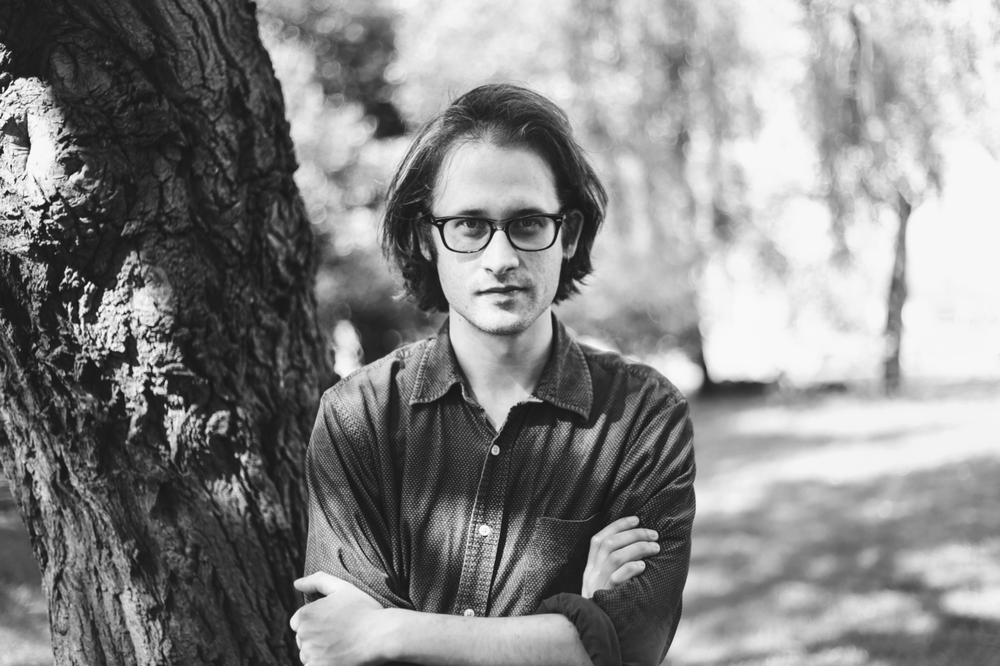The first ever Concerto for Drum Machine & Orchestra, which will have its premiere at Rise of the Machines #2 on March 18, is made up of five different parts, each written by a different composer. We interviewed composer Laurence Osborn to find out more about the composition process, his vision and inspiration for the work and why his movement Interdimensional Cable is named after an episode of the TV series Rick and Morty.
What inspired you to write a piece for Drum Machine?
The second edition of Rise of the Machines will take place at Village Underground, London.
When Nonclassical commissioned me, I was attracted to the idea of recycling and exploring a set of sounds with such a rich and varied cultural history. Of course, composers have been re-contextualising sonic tropes since forever, and I do it all the time in my other work. But the idea of finding a new context for these electronic sounds was new and exciting to me.
I was especially excited to write for the 808, which is seeing a bit of a resurgence at the moment. A lot of the music I’m currently listening to - music created by Atlanta-based producers like Metro Boomin, Southside and Zaytoven - incorporates classic 808 sounds in extraordinarily inventive ways. I had a lot of fun deconstructing and studying their drum patterns while preparing this piece.
How is it different to write for Drum Machine compared with a more traditional concerto instrument? Were there any challenges?
The first edition of Rise of the Machines featured works by Gabriel Prokofiev and Aphex Twin.
The main challenge for me personally was the electronic element because I’m a complete technophobe. I can’t use Logic, Pro-Tools, or Max MSP, and can just about work my way around Garageband, so the prospect of working my way around a drum machine was a bit daunting for me. Thankfully Gabriel Prokofiev and Max de Wardener have been really brilliant in helping me sort out the track and the click. Hopefully by the end of this project I’ll have a bit more of a handle on it all.
I also set myself the creative challenge of avoiding anything resembling a recognisable 4/4 beat at all costs. I wanted to explore the sounds of the 808 as phenomena in their own right, rather than using them within rhythmic structures borrowed from other musical styles. This meant that I wrote what I wanted to hear straight onto my manuscript, rather than improvising with the drum machine. That said, the piece has turned out to be surprisingly danceable.
Each movement was written by a different composer. Can you tell us more about the composition process?
The five composers of Concerto for Drum Machine & Orchestra: Beni Giles, Laurence Osborn, Josephine Stephenson, Jo Thomas, Max de Wardener.
At the very beginning, we decided which movements we were going to write, and where each of our pieces was going to sit in the running order of the piece. Apart from that, we didn’t work very closely together at all, as far as I know. I think that this has turned out to be a very positive thing. We have all used the machine in very different ways, but because the sound of the 808 is so distinctive the piece feels really cogent and ‘bound’, in spite of our different approaches.
What was the vision for your movement? What can we expect from your contribution to the piece?
Graphic score of Barry Guy's Mr Babbage is Coming to Dinner!, which will also be performed at Rise of the Machines #2.
I had lots of strong ideas for the beginning of the movement, but absolutely no idea what the whole thing was going to look like, so I ended up writing five different introductions with the initial intention of choosing between them. Once I had written them all out, I had the idea of jamming them together and transitioning back and forth between them in a completely brutal, inelegant way. This made me think of the ‘Interdimensional Cable’ episodes of Rick and Morty, in which the characters sit on the sofa and channel-surf between surreal television shows from parallel universes. That’s why the movement is called Interdimensional Cable.
Can we expect more Drum Machines in the future of classical music? What influence will electronic music have on classical music?
I have no idea. But I do think that various kinds of electronically produced music are already heavily influencing my generation of composers in terms of melodic development, timbre, and structure, as well as instrumentation. One of the things that excites me about my generation is that we are all so magpie-like in the way that we explore and borrow from diverse musical styles. You’ve got Shiva Feshareki incorporating all sorts of turntable-based music into her practice and her compositions, Daniel Kidane borrowing from Jungle and Grime, composers like Alex Nikiporenko and Jocelyn Campbell both of whom have drawn on Trap and Cloud Rap influences... The implications of this for British contemporary music itself are phenomenally exciting, before we even begin to think about audiences.
Jessica Cottis will be conducting at Rise of the Machines #2
The audience question is more tricky because there is such a complex convergence of factors that affect the audience of any piece. But I think that an open-minded approach to polystylism that ignores the limitations of so-called ‘high-art’, and the programming of music in unusual venues and ‘extra-live’ performance contexts can only be a good thing if we want to keep attracting new people to our gigs!
Hear the world premiere of Concerto for Drum Machine & Orchestra on 18 March at Village Underground.






